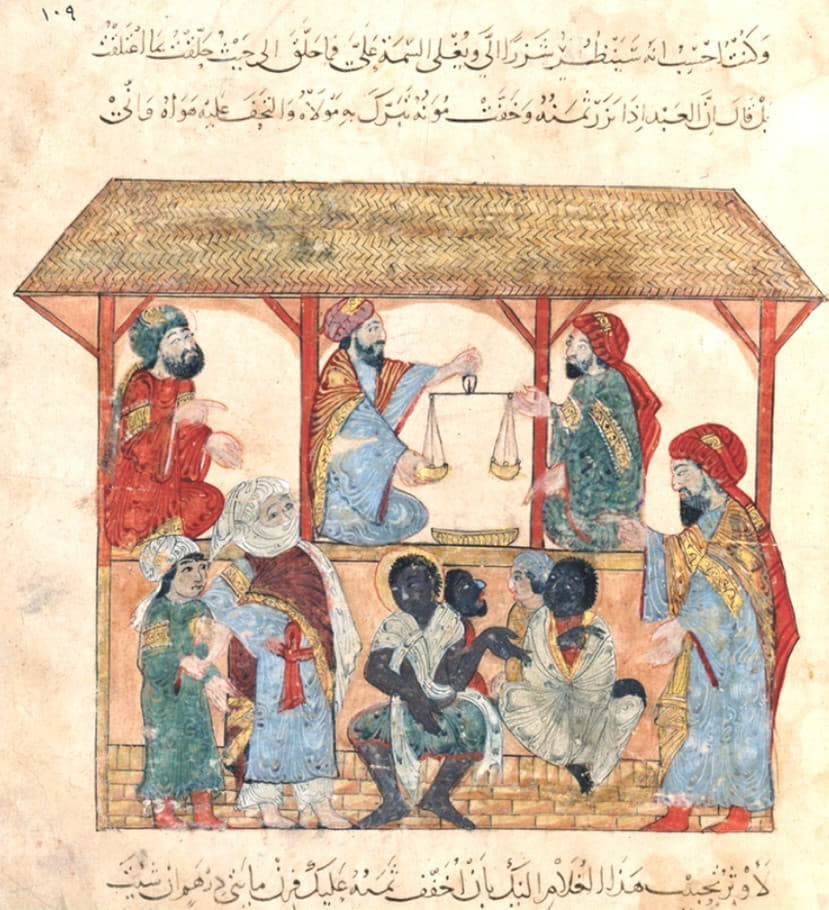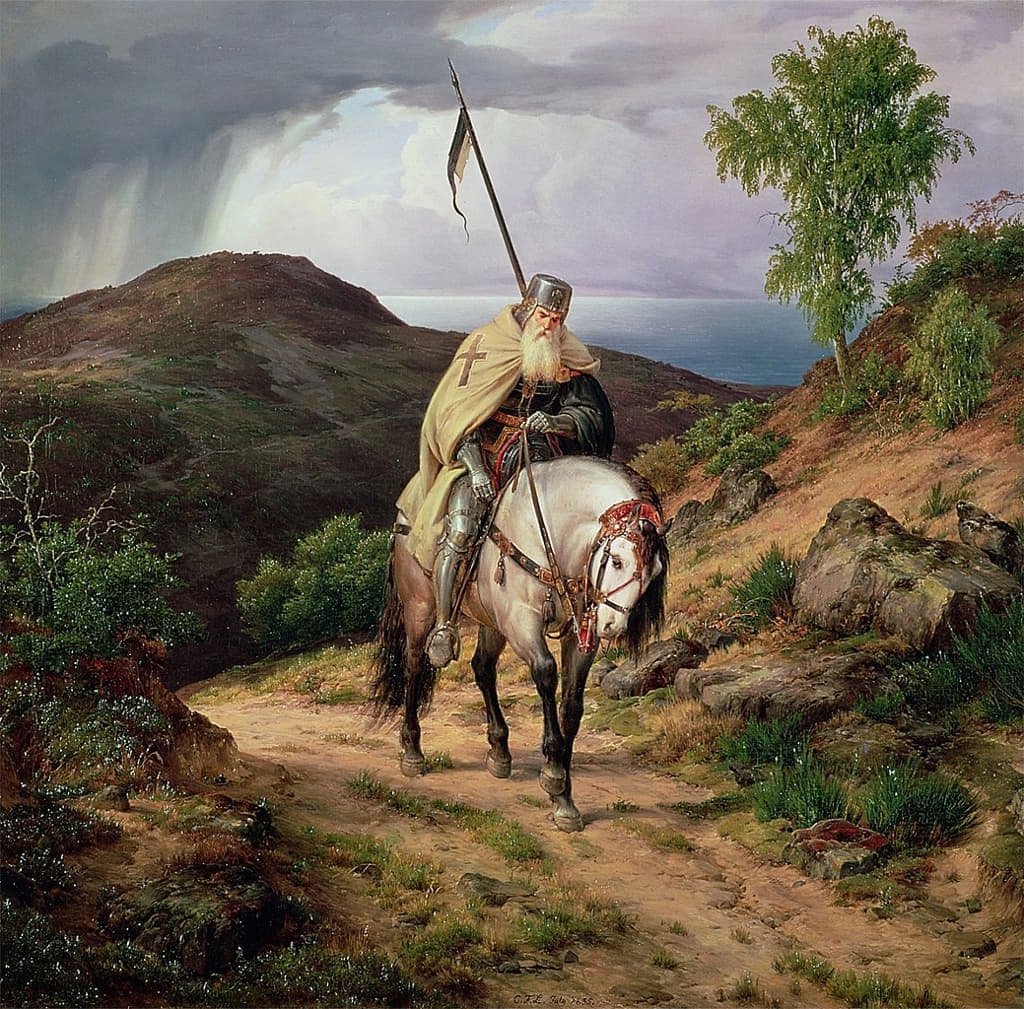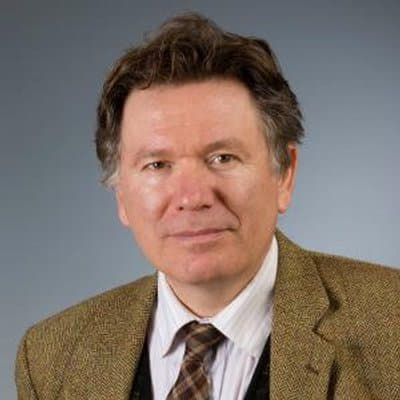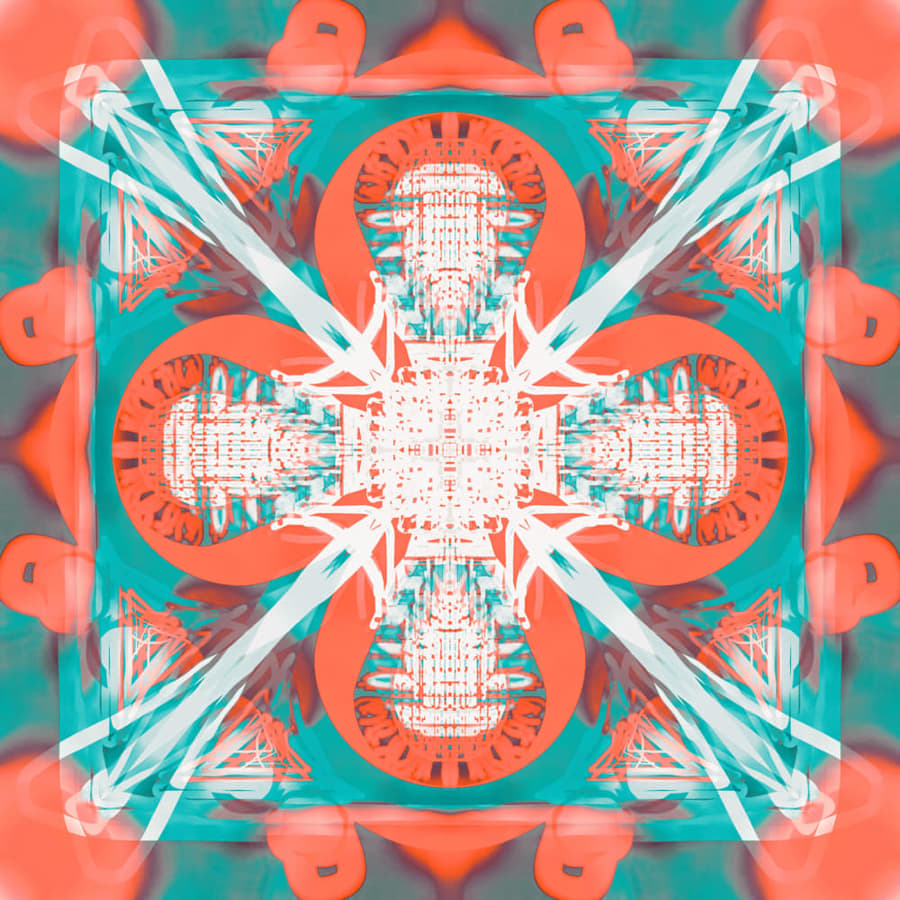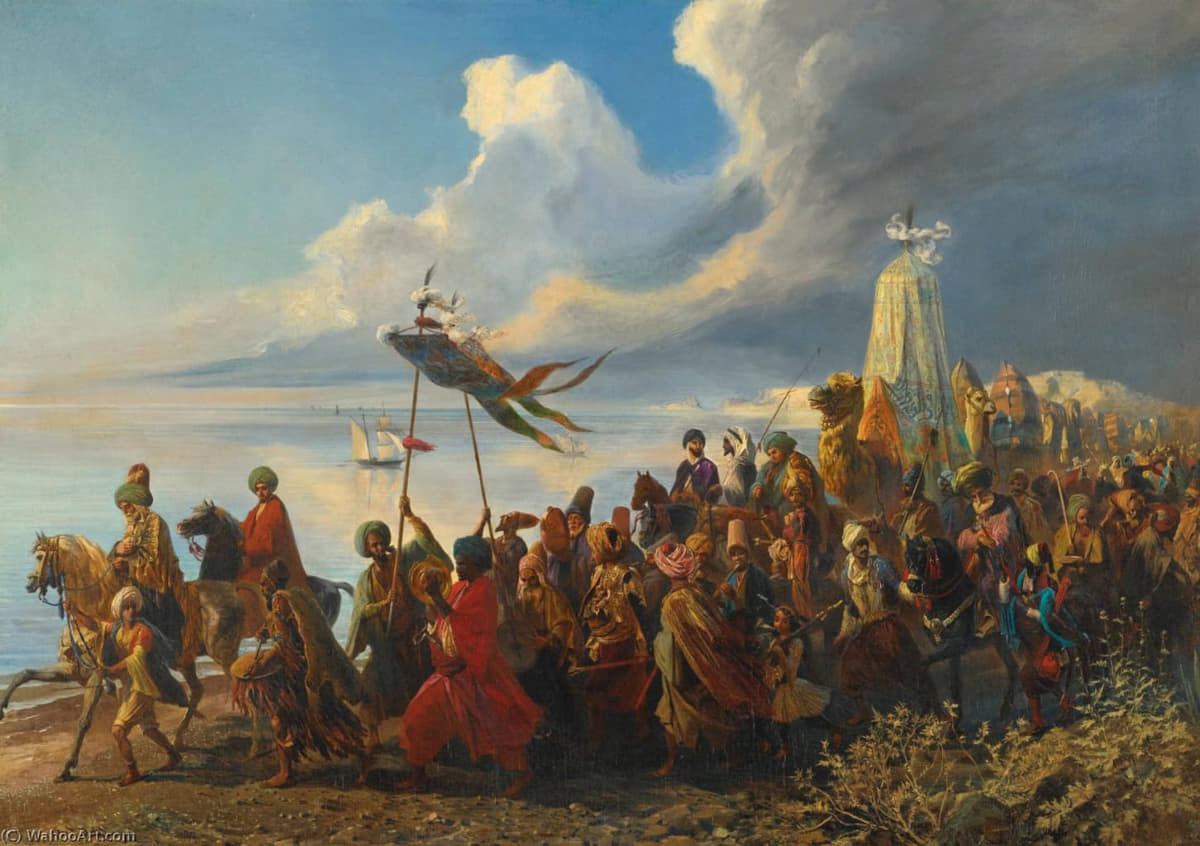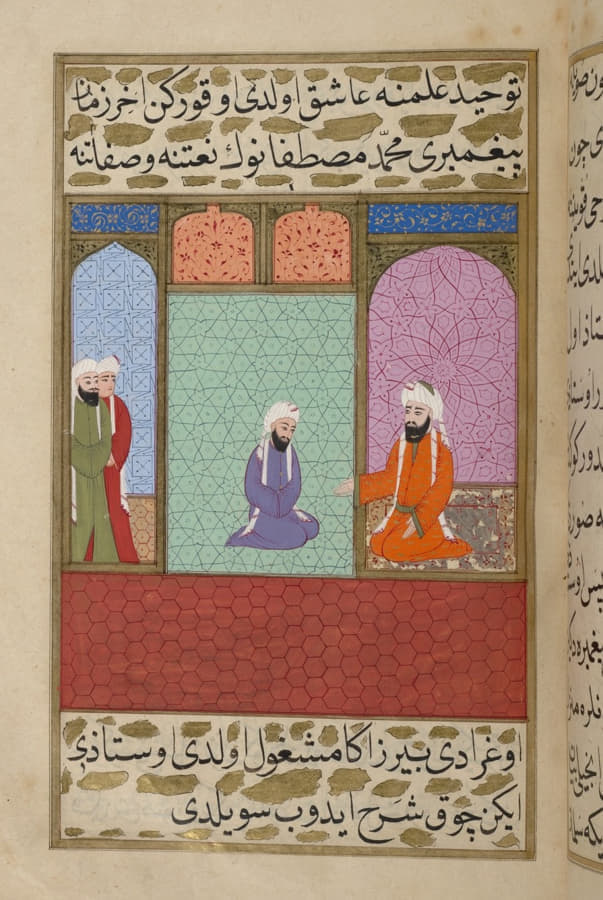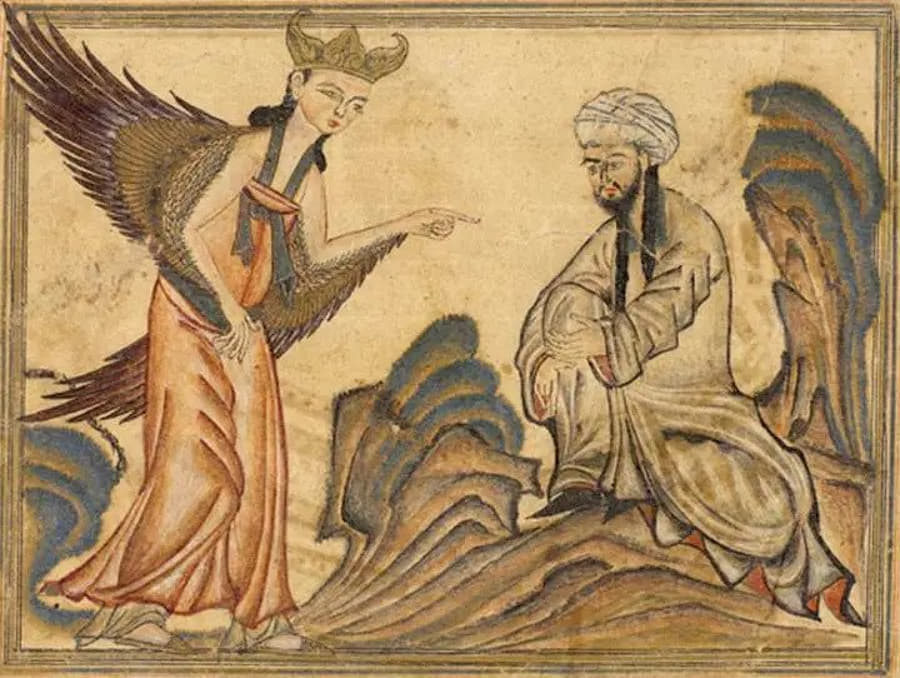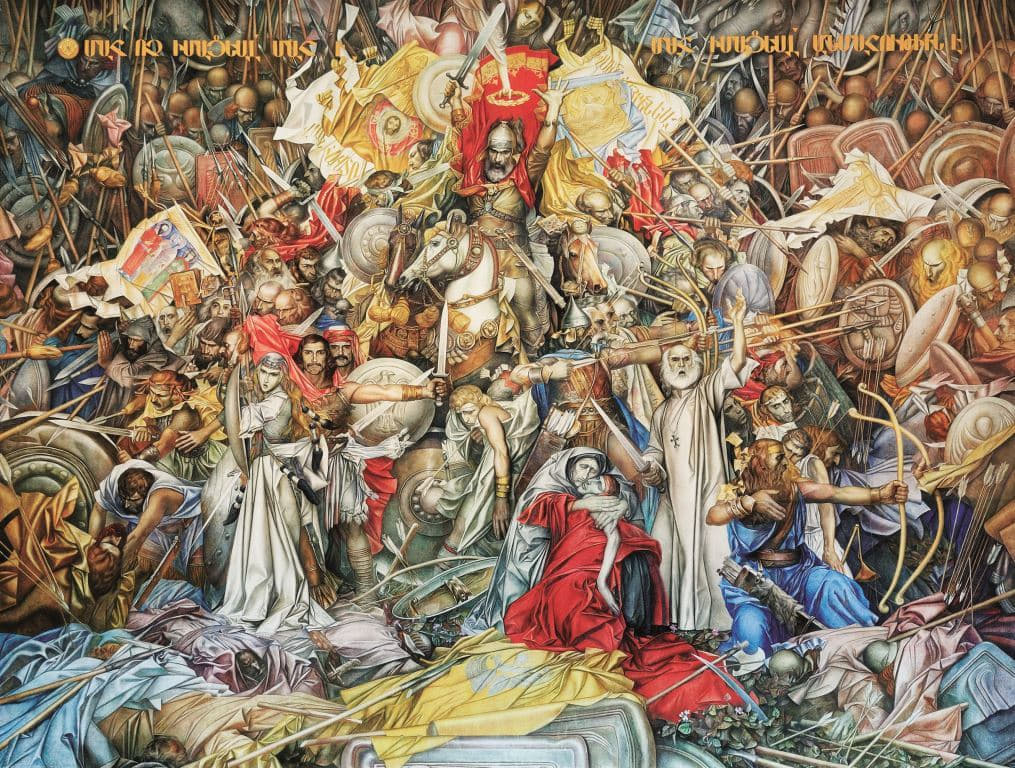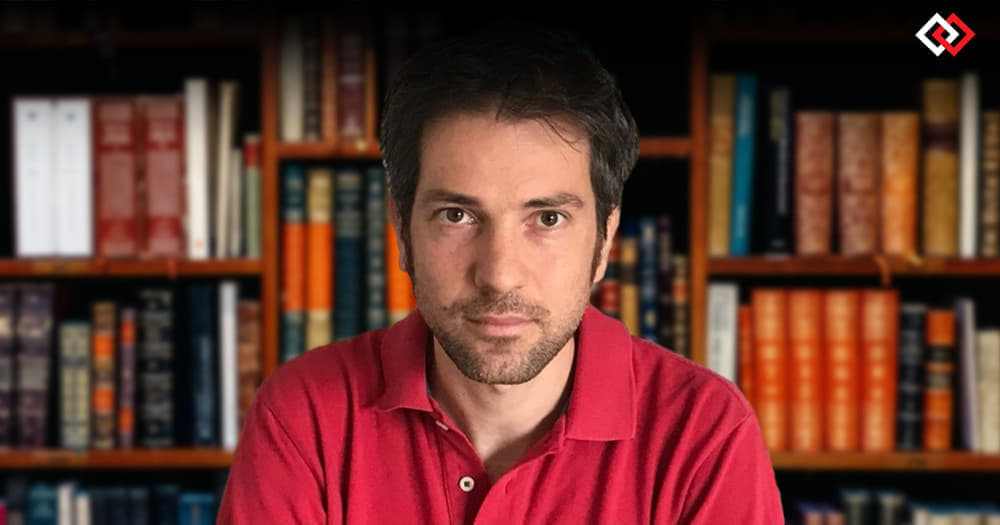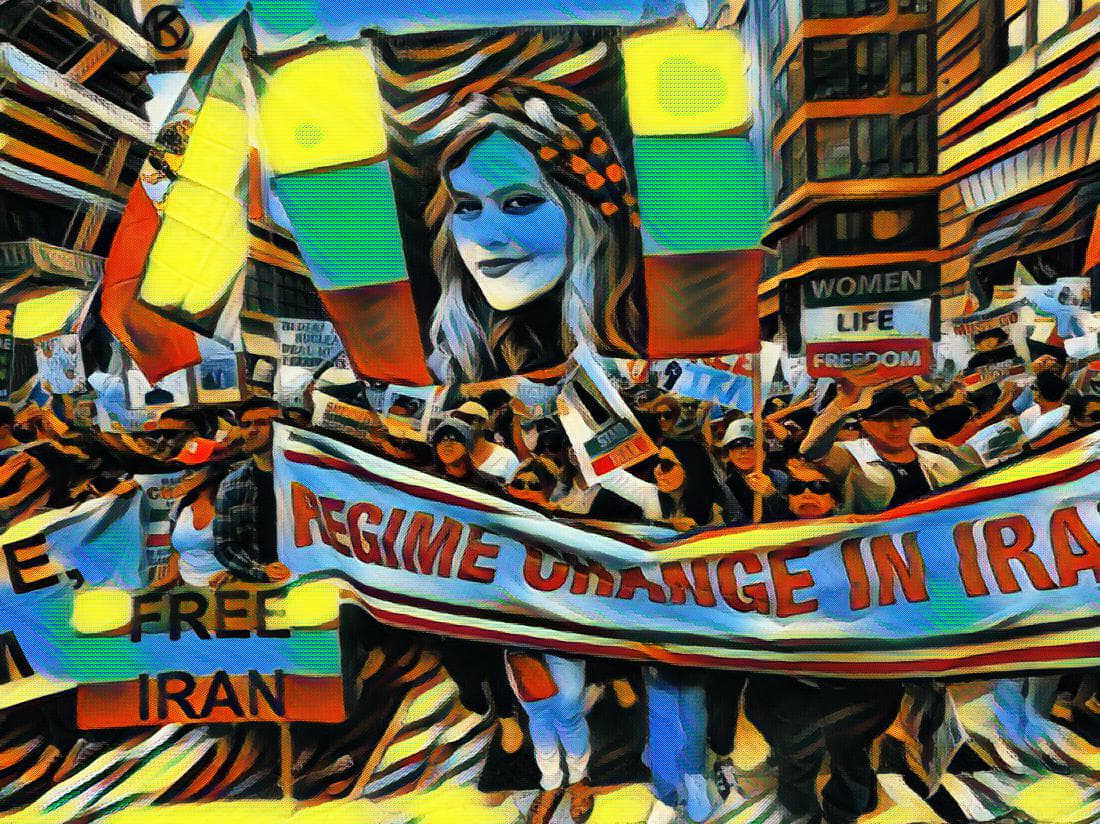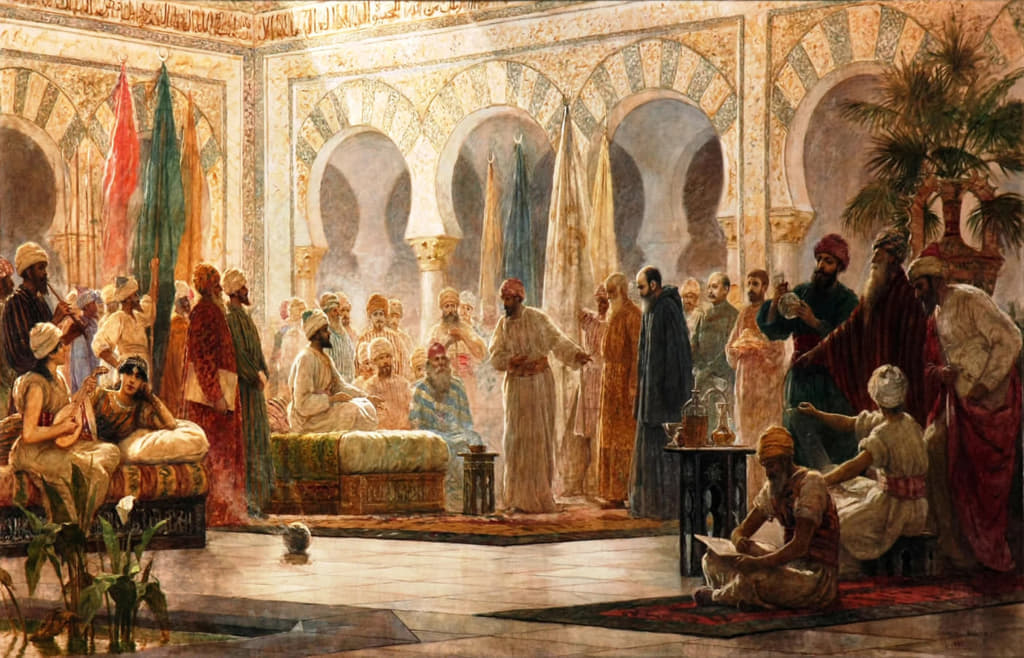BRICS: The Creation of Multipolarity
XV BRICS Summit: The Multipolar World is Established
The XV BRICS summit made a historic decision to admit six more countries to the organization—Argentina, Egypt, Ethiopia, Iran, Saudi Arabia and the United Arab Emirates. Thus, in fact, the formation of the core of the multipolar world was completed.
Although BRICS, formerly BRIC, was a conditional association of semi-peripheral (according to Wallerstein) or “second world” countries, the dialogue between these countries, which are not part of the structure of the collective West (NATO and other rigidly unipolar organizations dominated by the United States), gradually outlined the contours of an alternative world order. If the Western civilization considers itself to be the only one, and this is the essence of globalism and unipolarity, the BRICS countries represented sovereign and independent civilizations, different from the Western one, with a long history and a completely original system of traditional values.
Initially, the BRIC association, created in 2006 at the initiative of Russian President Vladimir Putin, included four countries—Brazil, Russia, India and China. Brazil, the largest power in South America, represented the Latin American continent. Russia, China and India are of sufficient scale on their own to be considered civilizations. But they also represent more than nation-states. Russia is the vanguard of Eurasia, the Eurasian “Greater Space.” China is responsible for a significant area of the contiguous powers of Indochina. India also extends its influence beyond its borders—at least to Bangladesh and Nepal.
When South Africa joined the BRIC countries in 2011 (hence the acronym BRICS—the “S” at the end of South Africa), the continent was symbolically represented as the largest African country.
7 Civilizations (1 vs. 6)
At the XV summit, held from August 22 to 24, 2023 in Johannesburg, the final formation of the multipolar club took place. The entry of three Islamic powers—Shiite Iran and Sunni Saudi Arabia and the UAE—was fundamental. Thus, the direct participation in the multipolar world of the entire Islamic civilization, represented by both branches—Sunnism and Shiism—was secured. In addition, along with Portuguese-speaking Brazil, Spanish-speaking Argentina, another strong and independent power, joined BRICS. Back in the mid-twentieth century, theorists of South American unification into a consolidated large space—above all Argentine general Juan Perón and Brazilian president Getúlio Vargas—considered a decisive rapprochement between Brazil and Argentina to be the first step in this process. If this were achieved, the process of integration of the Latin American ecumene would be irreversible. And this is exactly what has happened now in the context of the accession of the two major powers of South America, Brazil and Argentina, to the multipolar club.
Ethiopia’s acceptance is also highly symbolic. It is the only African country that has remained independent throughout the colonial era, preserving its sovereignty, its independence and its unique culture (Ethiopians are the oldest Christian people). Combined with South Africa, Ethiopia is strengthening its presence in the multipolar club of the African continent.
In fact, in the new composition of BRICS, we get a complete model of unification of all poles—civilizations, large spaces, except for the West, which is desperate to preserve its hegemony and unipolar structure. But now it faces not disparate and fragmented countries full of internal and external contradictions, but a united force of the majority of humanity, determined to build a multipolar world.
This multipolar world consists of the following civilizations:
- The West (USA+EU and their vassals, which includes, alas, the once proud and distinctive Japan);
- China (+Taiwan) with its satellites;
- Russia (as an integrator of the entire Eurasian space);
- India and its zone of influence;
- Latin America (with Brazil + Argentina at its core);
- Africa (South Africa + Ethiopia, with Mali, Burkina Faso, Niger, etc., emerging from French colonial influence).
- Islamic world (in both versions—Shiite Iran, and Sunni Saudi Arabia and UAE).
At the same time, one civilization—the Western one—claims hegemony, while the six others deny it this right, accepting only a multipolar system and recognizing the West only as one of the civilizations, along with others.
Thus, the rightness of Samuel Huntington, who saw the future in the return of civilizations, was confirmed in practice, while the fallacy of Fukuyama’s thesis, who believed that the global hegemony of the liberal West (the end of history) has already been achieved, became obvious. Therefore, Fukuyama can only doomedly lecture Ukrainian neo-Nazis, the last hope of globalists to stop the onset of multipolarity, for which Russia, in Ukraine, is fighting today.
August 2023 can be considered the birthday of the multipolar world.
Having outlined multipolarity, it is time to take a closer look at how the civilizational poles themselves interpret the situation in which they find themselves. And here we should take into account that virtually every sovereign civilization has its own idea of the structure of history, the nature of historical time, its direction and the end of history. Contrary to Fukuyama, who ambitiously proclaimed a single end of history (in his liberal version), each sovereign civilization operates with its own understanding, interpretation and description of the end of history. Let us briefly review this situation.
Each Civilization has its own Idea of the End of the World
Each pole of the multipolar world, that is, each civilization, has its own version of eschatology, somewhere more and somewhere less explicit.
“Eschatology” is the doctrine of the end of the world or the end of history. Eschatologies form a significant part of religious doctrines, but have secular versions as well. Any idea of the linear direction of the historical process and its supposed finale can be considered an “eschatology.”
The multipolar world consists of several civilizations or “big spaces” with a completely unique and original system of traditional values. This is the pole (not the individual state). A pole is precisely a civilization. Each civilization has its own idea of the nature of the historical process, its direction and its goal, and thus its own eschatology.
In some “large spaces” there are even several versions of eschatology, and a number of relatively small political formations, which cannot claim the pole in any way, nevertheless sometimes have a special and even developed eschatology.
Let us outline the different types in the most general terms.
Eschatologies of the West
Eschatology in Western Christianity
Western Christianity originally had the same eschatological doctrine as Eastern Christianity, being one. In Christianity—in both Catholicism and Orthodoxy (and even Protestantism)—the end of the world is considered inevitable, since the world and its history are finite and God is infinite. After the coming of Christ, the world moves toward its end, and the return of Christ itself is seen as taking place “in the last days.” The entire history of the Christian Church is a preparation for the end times, the Last Judgment, and the Second Coming of Christ. Christianity teaches that before the Second Coming there will be a general apostasy in mankind, nations will turn away from Christ and His Church, and will rely only on their own strength (humanism). Later, mankind will degenerate completely and the Antichrist, the messenger of the Devil, the “son of perdition” will seize power.
The Antichrist will rule for a short time—3.5 years, “a time, two times and half a time”), the saints and the prophets Elijah and Enoch, who will have returned to earth, will denounce him, and then the Second Coming, the resurrection of the dead and the Last Judgment will take place. This is what every Christian is obliged to believe.
At the same time, Catholicism, which gradually separated from the united Orthodox trunk, believed that the stronghold of Christians should be the Catholic Church under the Pope, the “City of God,” and the retreat would affect only earthly political entities, the “City of Earth.” There is a spiritual battle between the heavenly politics of the Vatican and the earthly politics of secular monarchs. In Orthodoxy, unlike Catholicism, the main obstacle in the way of the Antichrist is the Holy Empire, eternal Rome.
Traditional Christian eschatology and exactly this—partly pessimistic—view of the vector of history prevailed in Europe until the beginning of the New Age. And this is how traditional Catholics, unaffected by the spirit of modernity, who are becoming fewer and fewer in the West, continue to think about the end of the world.
Protestant eschatologies are more bizarre. In the Anabaptists of Münster or the Czech Hussites, the Second Coming was preceded by the establishment of universal equality (eschatological communism), the abolition of class hierarchies and private property.
Recently, under the influence of modernization and political correctness, many Protestant denominations and the Anglican Church have revised their view of eschatology, finally breaking with the ancient Christian tradition.
Masonic Eschatology: The Theory of Progress
At the origins of the Western European civilization of Modernity is European Freemasonry, in the midst of which the idea of “social progress” was born. The idea of progress is a direct antithesis of the Christian understanding of history; it rejects apostasy, the Antichrist, the Last Judgment, the resurrection of the dead and the very existence of the soul.
Masons believed that humanity develops progressively: in the beginning savagery (not earthly paradise), then barbarism (not traditional society), then civilization (culminating in the European New Age and the Enlightenment, i.e., secular atheistic societies, based on a materialistic scientific worldview). Civilization in its formation passes a number of stages from traditional confessions to the humanistic cult of the Great Architect of the Universe and further to liberal democracy, where science, atheism and materialism will fully triumph. And conservative Freemasonry (Scottish Rite) stopped usually with the cult of the Great Architect of the Universe (that is, with deism—the recognition of an undefined non-denominational “god”), and the more revolutionary, the Grand Orient rite was called to go further—to the complete abolition of religion and social hierarchy. The Scottish Rite stands for classical liberalism (big capital), the Grand Orient and other revolutionary lodges stand for liberal democracy (intensive growth of the middle class and redistribution of capital from the big bourgeoisie to the middle and small bourgeoisie).
But in Freemasonry, in both versions, we see a clearly directed vector to the end of history; that is, to the construction of modern progressive global civilization. This is the ideology of globalism in two versions—conservative (gradual) and offensive (revolutionary-democratic).
England: The Fifth Monarchy
During Cromwell’s English Revolution, the theory of the Fifth Monarchy developed in Protestant circles under the influence of Jewish circles and Sabbataism (notably the Dutch Rabbi Manasseh ben-Israel). The traditional Christian doctrine of the Four World Kingdoms (Babylonian, Persian, Greek and Roman) was declared insufficient, and after the fall of Rome (which for Protestants meant the refusal to recognize the authority of the Pope and the overthrow of the monarchy, regicide) the Fifth Kingdom was to come. Earlier, a similar idea had arisen in Portugal in relation to the maritime Portuguese Empire and the special mission of the “vanished King” Sebastian. The Portuguese and Portuguese-centered (mystical-monarchical) version was passed on to the Portuguese Jewish converts (Marranos) and Jews exiled to Holland and Brazil. One of them was Manasseh ben-Israel, from whom this theory passed on to English Protestants and Cromwell’s inner circle (Thomas Harrison).
Proponents of this theory considered Cromwell himself to be the future world Monarch of the Fifth Monarchy. The Fifth Monarchy was to be distinguished by the abolition of Catholicism, hereditary monarchical power, estates and to represent the triumph of bourgeois democracy and capitalism.
This was continued by the current of “British Israelism,” which declared the English to be the “ten lost tribes of Israel” and spread the belief in the coming world domination of England and the Anglo-Saxon race. The world rule of the “New Israelites” (Anglo-Saxons) was seen beyond the Four Kingdoms and broke with traditional Christian eschatology, as the Fifth Monarchy meant the destruction of traditional Christian kingdoms and the rule of the “chosen people” (not Jews, but the English).
From England, extreme Protestant sects transferred these ideas to the USA, which was created as a historical embodiment of the Fifth Monarchy. Hence the American eschatology in the mythologies of William Blake (in America a Prophecy the USA is represented by the giant Orcus freeing himself from the chains of the old god), who was also an adherent of the theory of “British Israelism.” Blake embodied these ideas in his poem “Jerusalem,” which became the unofficial anthem of England.
USA: Dispensationalism
In the United States, the ideas of “British Israelism” and the Fifth Monarchy were developed in some Protestant denominations and became the basis for a special current of dispensationalism based on the ideas of the Plymouth Brethren (preacher John Darby) and the Scofield edition of the Bible, where the eschatological interpretation in a dispensationalist way is incorporated into the biblical text in such a way that to ordinary people it seems to be a single narrative.
Dispensationalism considers Anglo-Saxons and Protestants (“twice born”) to be the chosen people, and applies to them all the prophecies about the Jews. According to this doctrine, mankind lives at the end of the last “dispensation” of the cycle, and the Second Coming of Christ will soon take place, and all the faithful will be raptured into heaven (the Rapture). But this will be preceded by a final battle (Armageddon) with the “king of Rosh, Meshech and Tubal,” which from the 19th century to the present day has meant Russia. Before this Russia would invade Palestine and, there, fight with the “twice-born” (Anglo-Saxons), and then be defeated by them. After that, there would be a mass conversion of Jews to Protestantism and an ascent to heaven (by means of miracles or spacecraft).
In recent decades, this current has merged with political Zionism and has become the basis of the ideology and geopolitics of the American neocons.
France: The Great Monarch
In France, as early as the late Middle Ages and the dawn of the Modern Age, an eschatological theory of the Great Monarch developed, which claimed that a secret French king, chosen by God, would appear at the end of time and save humanity—from decadence, Protestantism, and materialism. This version of eschatology is Francocentric and conservative, and circulated in mystically oriented circles of the aristocracy. The difference from traditional Catholic eschatology is that the French king, rather than the Vatican See, is the barrier to the Antichrist.
Some researchers consider Gaullism to be a secular and simplified geopolitical version of the Great Monarch’s eschatology. General De Gaulle advocated the unification of the peoples of Europe (primarily the French, Germans and Russians) and against NATO and Anglo-Saxon hegemony. The French writer Jean Parvulesco (following Raymond Abellio) called it “the mystical dimension of Gaullism.”
But the vast majority of the French ruling class is dominated by Masonic eschatology—with the exact opposite understanding.
Italy: The Ghibellines and the Greyhound
In the Middle Ages, the confrontation between the Roman throne and imperial power—after Charlemagne proclaimed himself “Emperor”—at times became extremely acute. This led to the creation of two parties—the Guelphs, supporters of the Pope, and the Ghibellines, supporters of the Emperor. They were most widespread in Italy, the possession of which was the basis for German kings to be recognized as Emperors of the (Western) Roman Empire after coronation in Rome.
The poet Dante was a supporter of the Ghibellines and encoded in his poem, Divine Comedy, eschatological teaching of the Ghibellines that after the temporary rule of the Ghibellines and the complete degradation of the Catholic Church, a true Ghibelline monarch would come to Europe, who would revive the morals and spirituality of Western civilization. He is symbolically represented in the figure of the greyhound (veltro) and the mystical number DXV (515), which yields, after rearrangement of letters/digits the word, DVX, “leader.” Dante expounded the ideas of the World Monarchy in a separate treatise. Here again the eschatological theme is connected with monarchical power—and to a greater extent than with the Catholic Church. For Dante, the French monarchy was seen as being on the side of the Antichrist, as was the Roman throne that had risen against the Emperor.
Germany: Hegel and the End of History
The original version of eschatology is given in Hegel’s philosophy. He sees history as a dialectical process of the scattering of the Spirit through Nature, and then a new gathering of the particles of the Spirit in an enlightened society. The culmination of this process according to Hegel would be the creation of a unified German state on the basis of the Prussian monarchy (during his lifetime it did not exist). In this enlightened monarchy, the cycle of the history of the Spirit would be completed. These ideas influenced the Second Reich and Bismarck, and later in a distorted form Hitler’s Third Reich. It was Hegel who put forward the thesis of the “end of history” in a philosophical context, combining in a peculiar combination Christian eschatology (including the figure of the Christian ruler) and a special mystical-monarchical interpretation of social progress (as a preliminary stage before the creation of the world empire of philosophers).
The German philosopher (Catholic) Carl Schmitt correlated the idea of the Reich with the function of the Katechon, the restainer, which was the meaning of imperial power in Byzantium and which was usurped (according to the Orthodox) in the ninth century by the Frankish Emperor Charlemagne. This line was partly in line with the Ghibelline tradition.
The German Jew, Karl Marx, built a theory of communism (the end of history) on an inverted materialist version of Hegelianism, and the Russian philosopher Alexandre Kojève tried to identify the end of history with globalism and the planetary triumph of liberalism. But it is important that Hegel himself, unlike his sectarian interpreters, was an eschatological, Germano-centered monarchist.
Iberia: The Habsburgs and Planetary Evangelization
Eschatology in the Spanish version was linked to the colonization of the Americas and the mission of Charles V Habsburg and his dynastic successors. Since in the prophecies about the end of the world (Pseudo-Methodius of Patara), the sign of the end of the world was the spread of the Gospel to all mankind and the establishment of a worldwide Christian empire under a Catholic world king. The geographical discoveries and the establishment of vast colonies by Spain gave reason to consider the Spanish Habsburgs—above all Charles V and Philip II—as contenders for the role of world monarch. This Catholic-monarchical version, partly consonant with the French version, but in contrast focused on the Austrian Emperors, the traditional opponents of the French dynasty. Christopher Columbus was a proponent of an eschatological world empire during the reigns of the Catholic kings Isabella and Ferdinand, and reflected his eschatological views in The Book of Prophecies, compiled on the eve of his fourth voyage to the Americas and completed immediately after his return.
After the Bourbon reign in Spain, this eschatological line disappeared. Its echoes, partly, can be found in Catholic circles in Latin America and especially in the Jesuits.
The Fifth Empire in the Portuguese version and its Brazilian offshoot are generally close in type to this version of eschatology.
Israel: The Territory of Mashiach
The State of Israel was established in 1948 in Palestine, as a realization of the eschatological aspirations of the Jewish Diaspora, who had been waiting for two millennia for a return to the Promised Land. Jewish eschatology is based on the belief in the chosenness of the Jews and their special role in the end times, when the Jewish Mashiach will come and Jews will rule the world. It is the best studied. In many ways, it is Jewish eschatology that has determined the main scenarios of end-of-the-world visions in monotheistic traditions.
Modern Israel was created as a state prepared for the coming of Mashiach, and if this function is taken out of the picture, its very existence loses its meaning—first of all, in the eyes of the Jews themselves.
Geopolitically, Israel cannot claim to be an independent civilization, an empire, whose scale is necessary for full participation in global eschatological processes. However, if we take into account the rapprochement of political Zionists in the United States with neocons and Protestant dispensationalists, the role of Jews in the last century in the Masonic lodges, the influence of the Diaspora in the ruling and especially economic elites of the West, then the whole picture changes, and the basis for serious eschatological events turns out to be significant.
The Kabbalistic interpretation of the migration route of the bulk of the Jewish Diaspora describes it as following the Shekhinah (God’s Presence) in exile (according to Rabbi Alon Anava). At the beginning of the Galut (dispersion), the bulk of the Jews were concentrated in the Middle East (Mizrahi). Then the Shekhinah began to rise to the north and the Caucasus (Khazar Kaganate). From there, the path of the Shekhinah led to Western Russia, to the Baltics and to Eastern Europe (Ashkenazi). Then its movement led the Ashkenazi to go deeper into Western Europe, and made the Sephardim move from the Iberian Peninsula to Holland and the American colonies. Finally, the bulk of the Jews concentrated in the United States, where they still represent a majority compared to Jewish communities in other countries. Thus, the Shekhinah remains in the United States. The second largest community of Jews is in Israel. When the proportions shift in Israel’s favor, it will mean that the Shekhinah, after a two-thousand-year circle, has returned to Palestine.
Then we should expect the building of the Third Temple and the coming of the Mashiach. This is the logic of Jewish eschatology, clearly visible in the political processes unfolding around Israel. This idea is adhered to by the majority of religious Zionists, who make up a significant percentage of Jews both in Israel and in the Diaspora. But any Jew, wherever he or she may be and whatever ideology he or she may share, cannot fail to recognize the eschatological nature of the modern state of Israel and, consequently, the far-reaching goals of its government.
Orthodox Eschatology
Greeks: The Marble Emperor
In the Orthodox population of Greece, after the fall of Byzantium and the seizure of power by the Ottomans, an eschatological theory developed about the coming of an Orthodox liberator-king—the Marble Emperor. His figure was sometimes interpreted as the return of Constantine XII Paleologos, who, according to legend, did not die when the Turks took Constantinople, but was carried away by an angel to the Marble Gate and there awaits his hour to free the Orthodox (Greeks) from the oppression of foreigners.
In some versions of the eschatological legend this mission was entrusted to the “red-haired king of the north,” by whom in the 18th century many Athonite monks understood the Russian Emperor.
These are echoes of the classical Byzantine doctrine of the Katechon, the “restainer” who is destined to become the main obstacle in the way of the “son of perdition” (Second Epistle of Saint Paul the Apostle to the Thessalonians) and of the Tsar-Savior from the book of Pseudo-Methodius of Patara. Greek political-religious thought retained this eschatological component during the Ottoman period, although after the liberation from the Turks, Greek statehood began to be built on Masonic liberal-democratic models (despite the brief period of rule by a number of European dynasties), completely breaking with the Byzantine heritage.
Russia: The King of the Third Rome, the Savior of the Sects, and Communism
In Russia, eschatology took a stable form by the end of the fifteenth century, which was reflected in the theory of Moscow as the Third Rome. It asserted that the mission of the Katechon, the restainer, after the fall of Constantinople passed to Muscovite Russia, which became the nucleus of the only Orthodox Empire—that is, Rome. The Grand Duke Moscow changed the status and became Tsar, Vasilevs, Emperor, restraining.
Henceforth, the mission of Russia and the Russian people was to slow down the coming of the “son of perdition,” the Antichrist, and to resist him in every possible way. This formed the core of Russian eschatology, and formalized the status of the Russian people as “God-bearers.”
Forgotten in the era of the Western reforms of Peter and his followers, the idea of Moscow as the Third Rome revived again in the 19th century, under the influence of the Slavophiles, and then became a central theme in the Russian Orthodox Church beyond the Frontier.
After the schism, eschatology became widespread among the Old Believers and sectarians. The Old Believers generally believed that the fall of the Third Rome had already irreversibly taken place, while the sectarians (Khlysty, Skoptsy), on the contrary, believed in the imminent coming of the “Russian Christ.”
The secular version of sectarian “optimistic” eschatology was taken up by the Bolsheviks, hiding it under the Marxist version of Hegel’s end of history. In the last period of the USSR, the eschatological belief in communism faded, and the regime and the country collapsed.
The theme of Russian eschatology became relevant again in Russia after the beginning of the Special Military Operation, when the confrontation (with the Masonic-liberal and materialistic-atheistic) civilization of the West became extremely acute. Logically, as Russia establishes itself as a separate civilization, the role of eschatology and the central importance of the function of the Katechon will only increase.
The Islamic World
Sunnism: The Sunni Mahdi
In Sunnism, the end of the world is not described in detail, and the visions of the coming leader of the Islamic community, the Mahdi, pale before the description of the Last Judgment that God (Allah) will administer at the end of time. Nevertheless, this figure is there and is described in some detail in the hadiths. It is about the emergence of a military and political leader of the Islamic world who will restore justice, order and piety, which has fallen into decay by the end of time.
The authoritative Sufi, Ibn Arabi, specifies that the Mahdi will be assisted in ruling by “viziers,” forming the basis of the eschatological government; and according to him, all the viziers of this “metaphysical government,” as assistants and projections of the unified pole (kutbah) will come from non-Arabic Islamic communities.
The Mahdi will defeat al-Dajjal (the Liar) and establish Islamic rule. A peculiar version of Islamic eschatology is also professed by supporters of the Islamic State (banned in Russia). Various figures in Islam claimed for the role of Mahdi. Most recently, the head of the Turkish PMC SADAT Adnan Tanriverdi proclaimed Erdogan as the Mahdi.
Iran: The Twelfth Imam
In Shi’ism, the Mahdi theme is much more fully developed, and eschatology underlies the very political-religious teachings of the Shi’ites. Shi’ites consider only the followers of Ali, the Imams, to be the legitimate rulers of the Islamic community. They believe that the last, Twelth, Imam did not die, but withdrew into concealment. He will appear to people again at the end of time. This will be the beginning of the rise of the Shia world.
Then there will be the appearance of Christ, who together with the Mahdi will fight with al-Dajjal and defeat him, establishing for a short period—just before the end of the world—a just, spiritual order.
Such views are espoused by the majority of Shiites, and in Iran it is the official ideology, largely determining the entire political strategy of this country.
Shiite eschatology in many respects continues the Iranian pre-Islamic tradition of Zoroastrianism, which had a developed theory of the change of cycles and their culmination in the Great Restoration (frashokart). There the image of the coming King-Savior, Saoshyant, who is destined to be born magically from a pure Virgin and defeat the army of the dark beginning (Ahriman) in the last battle, also plays an important role.
Probably, it was the ancient Iranian doctrine about the struggle of light (Ormuzd) and dark (Ahriman) began through history, as a key to its meaning and about the final victory of the warriors of light, became the basis for the eschatological part of monotheistic teachings. But in any case, the influence of Zoroastrianism on Shi’ism is obvious, and this is what gives Iranian eschatology such a sharp and vivid political expression.
Southeast Asia
India: Kalki
In Hinduism, the end of the world has little significance, although a number of sacred texts associated with the Kalachakra cycle tell of kings of the mystical land of Shambhala, where the conditions of the golden age reign. At the ultimate moment in history, one of these kings, Kalki, believed to be the tenth avatar of Vishnu, will appear in the human world and fight the demon Kali. Kalki’s victory will end the dark age and signify a new beginning (satya-yuga).
Kali-yuga (the age of darkness) is described as an era of the decline of mores, traditional values and the spiritual foundations of Indian civilization. Although Indian tradition is quite detached from history and its cycles, believing that spiritual realization can be achieved under any conditions, eschatological motifs are quite present in culture and politics.
In contemporary India, the popular conservative politician and Prime Minister Narendra Modi is recognized by some traditionalist circles as a divine avatar, either of Kalki himself or his harbinger.
Buddhism: The Buddha of Times to Come
Eschatological motifs are also developed in the Buddhist tradition. The end of time is seen in it as the coming of the future buddha, Maitreya. His mission is to renew the spiritual life of the sangha, the Buddhist community, and to turn humanity to the salvific path of awakening.
On Buddhism were based some political systems of the countries of southeast Asia—Japan, combined with the autochthonous cult of Shinto, centered on the figure of the divine Emperor, and a number of states of Indo-China. In some cases, the appeal to the figure of the coming Buddha Maitreya became the basis for political movements and popular uprisings.
Sometimes eschatological Buddhism found support in communist ideology, giving rise to syncretic forms—Cambodia, Vietnam, etc.
China: The Heavenly Mandate
Eschatology is virtually absent in Confucianism, which is the dominant political-ethical mainstream of Chinese tradition. But at the same time, it is developed in some detail in the religion of the Chinese Taoists and in Taoist-Buddhist syncretistic currents. According to Taoist ideas about cycles, the history of the world is reflected in the change of ruling dynasties in China. This change is the result of the loss of what the Taoists call the “heavenly mandate,” which every legitimate ruler of China is obliged to obtain and retain. When this mandate runs out, China is in turmoil, with civil war and unrest. The situation is saved only by obtaining a new heavenly mandate and enthronement of a new dynasty.
The Chinese Middle Empire is perceived by the Chinese themselves as an image of cosmic hierarchy, as the Universe. In the Empire, culture and nature merge to the point of indistinguishability. Therefore, dynastic cycles are cosmic cycles by which epochs are measured.
The Chinese tradition does not know the absolute end of the world, but believes that any deviation of the world order, in any direction, requires symmetrical restoration. This theory implicitly contributed to the Chinese revolution and retains its significance to the present day.
In fact, the figure of the current chairman of the CPC Central Committee, Xi Jinping, is seen as a new appearance of a legitimate Emperor who has received a heavenly mandate.
Africa
Garvey: Black Freemasonry
One of the founders of the movement to restore dignity to African peoples was Jamaican-born Freemason, Marcus Garvey, who applied Masonic progressivism to blacks and called for rebellion against whites.
Garvey took a series of actions to bring American blacks back to the African continent, continuing a process that began in 1820 with the creation of an artificial state on the west coast of Africa, Liberia. Liberia’s government copied the U.S. and so too was composed predominantly of Freemasons.
Garvey interpreted the struggle for the rights of blacks not just as a means to gain equality, but actively promoted the theory of the chosenness of Africans as a special people, which after centuries of slavery was called to establish its dominance—at least in the space of the African continent, but also to claim and assert the rights to power in the U.S. and other colonial countries. And in the center of this world movement should stand the Masonic lodges, where only black people are allowed.
The extreme representatives of this current were the organizations Black Power, Black Panthers and later BLM.
Great Ethiopia
In Africa, among the melanodermatic (black) population, their own original versions of eschatology have developed. All of them (as in Garvey’s eschatology) regard African peoples as endowed with a special historical mission (blacks = New Israel) and foretell the rebirth of themselves and the African continent as a whole. The general scheme of African eschatology considers the era of colonization and slavery as a great spiritual trial for the black race, to be followed by a period of reward, a new golden age.
In one version of this eschatology, the core of African identity is Ethiopia. Its population (Kushites and Semites with dark skin) is seen as the paradigm of African civilization, as Ethiopia is the only African political entity in Africa that has not been colonized, either by European powers or by Muslims.
In this version, all African peoples are considered to be related to Ethiopians, and the Ethiopian monarch, the Negus, is perceived as a prototype of the ruler of the great African Empire. This line was the basis of Rastafarianism, which became popular among the blacks of Jamaica and further spread among the black population of Africa and America.
This version is prevalent among Christian and Christianized peoples. Christian eschatology of Ethiopians (Monophysites) acquires original features connected with the special mission of Ethiopia, which is considered to be the chosen country and the chosen people (hence the legend that the ancestor of Ethiopians was Melchizedek, the King of Peace). In Rastafarianism, this Ethiopian eschatology acquires additional—sometimes quite grotesque—features.
Black Islam
Another version of African eschatology is the Nation of Islam, which emerged in the United States. This doctrine claims that both Moses and Muhammad were black, and that God incarnates in black politico-religious leaders from cycle to cycle. The founder of this current, Wali Fard Muhammad, considered himself to be such an incarnation (this is consonant with the Russian Khlysty). After the death of Wali Fard Mohammed believers expect his return on a spaceship.
Parallel to this is the proclamation of the need for black struggle in the United States and around the world—and not just for their rights, but for recognition of their spiritual and racial leadership in civilization.
Under the contemporary leader of the Nation of Islam, Louis Farrakhan, this current has achieved great influence in the United States and has had a significant impact on the ideological formation of black Muslims in Africa.
Black Egypt
Another version of African political eschatology is the KMT current (from the ancient Egyptian name of Egypt itself), which develops the ideas of the African philosopher Sheikh Anta Diop. He and his followers developed the theory that ancient Egypt was a state of black people, which is evident from its name “KMT,” in the Egyptian language meaning “Black Land” or “Land of Blacks.” Anta Diop believed that all African religious systems are echoes of Egyptian religion, which must be restored in its entirety.
His follower Kemi Seba developed the thesis of African monotheism, which is the basis of a religio-political system where power should be vested in a Metaphysical Government expressing the will of God (like the Mahdi viziers in Ibn Arabi’s version). Life should be based on the principle of closed black communities—kilombo.
At the same time, Africans should return to the traditions of their peoples, fully control the African continent, restore as dark a skin color as possible (through melano-oriented marriages) and carry out a spiritual revolution in the world.
The single, sacred Pan-African language should be the restored ancient Egyptian language (medu neter), and Swahili should be used for practical needs. According to the proponents of KMT theory, black people are the bearers of sacredness, Tradition and the people of the golden age. White civilization, on the other hand, represents perversion, pathology, and anti-civilization, where matter, money, and capital stand above spirit.
The main enemy of Africans and blacks around the world is whites, who are considered the bearers of modernization, colonialism, materialism and spiritual degeneration. Victory over whites is the guarantee of blacks’ fulfillment of their world mission and the crowning achievement of the decolonization process.
Latin America
Ethno-eschatology: Indigenism
In Latin American countries, a number of aboriginal Amerindian peoples see the logical end of colonization as the restoration of ethnic societies (indigenism). These tendencies are developed to varying degrees depending on the country.
Many consider the rebellion of Tupac Amaru II, a descendant of the last Inca ruler, who led an Indian revolt against the Spanish presence in Peru in 1780, as the symbolic beginning of Indian resistance to colonizers.
In Bolivia in 2006, Evo Morales, the first-ever representative of the Aymara Indian people, was elected president. Increasingly, voices are being heard—primarily in Peru and Bolivia—in favor of declaring the ancient Indian cult of the earth goddess Pachamama an official religion.
As a rule, the ethnic eschatology of Latin American Indians is combined with leftist socialist or anarchist currents to create syncretic teachings.
Brazilian Sebastianism
A particular version of eschatology, linked to Portuguese ideas about the Fifth Empire, developed in Brazil. After the capital of the Portuguese Empire was moved to Brazil because of a republican coup d’état in Portugal, the doctrine arose that this transfer of the capital was not accidental and that Brazil itself had a special political-religious mission. If European Portugal lost the doctrine of King Sebastian and followed the path of European bourgeois democracy, then Brazil must now assume this mission and become the territory where, in the critical conditions of the historical cycle, the missing but not dead King Sebastian would be found.
Under the banner of such a doctrine the conservative Catholic-eschatological and imperial revolts against the Masonic liberal government—Canudos, Contestado, etc.—took place in Brazil.
Eschatological Map of Civilizations
Thus, in a multipolar world, different eschatologies clash or enter into an alliance with each other.
In the West, the secular model (progressivism and liberalism) clearly prevails, with a significant addition in the form of extreme Protestant dispensationalism. This is the “end of history,” according to Fukuyama. If we take into account the liberal elite of European countries under full American control, we can speak of a special eschatology that unites almost all NATO countries. We should also add the theory of radical individualism, common to liberals, which demands to free people from all forms of collective identity—up to freedom from sex (gender politics) and even from belonging to the human species (transhumanism, AI). Thus, the new elements of Masonic progressive eschatology, along with the “open society,” are the imperatives of gender reassignment, support for LGBTQ principles, posthumanism, and deep ecology (which rejects the centrality of the human being in the world that all traditional religions and philosophical systems have insisted on).
Although Zionism is not a direct continuation of this version of eschatology, in some of its forms—primarily through its alliance with the American neocons—it partly fits into this strategy; and given the influence of Jews on the ruling elites of the West, these proportions may even be reversed.
Russia and its Katechonic function, which combines the eschatology of the Third Rome and the communist horizon as a legacy of the USSR, stands most blatantly in the way of this end of history.
In China, Western Marxism, already substantially reworked in Maoism, increasingly openly displays Confucian culture, and the head of the CCP, as traditional Emperor, is given a heavenly mandate to rule “All that is under Heaven” (tianxia—天下).
Eschatological sentiments are constantly growing in the Islamic world—both in the Sunni zone and especially in Shiism (primarily in Iran), and it is modern Western civilization—the same one that is now fighting Russia—that is almost unanimously presented as al-Dajjal for all Muslims.
In India, Hindutva-inspired sentiments (the doctrine of the independent identity of Hindus as a special and unique civilization) are gradually growing, proclaiming a return to the roots of the Hindu tradition and its values (which do not coincide at all with Western values), and hence outlining the contours of a special eschatology associated with the phenomenon of Kalka and the overcoming of the Kali-yuga.
Pan-Africanism is developing towards the strengthening of radical teachings about the return of Africans to their identity and a new round of anti-colonial struggle against the white world (understood primarily as colonial countries belonging to the civilization of the West). This describes a new vector of black eschatology.
In Latin America, the desire to strengthen its geopolitical sovereignty is based on both leftist (socialist) eschatology and the defense of Catholic identity, which is particularly evident in Brazil, where both leftists and rightists are increasingly distancing themselves from globalism and U.S. policy (hence Brazil’s participation in the BRICS bloc). The ethno-eschatologies of indigenism, though relatively weak, generally add an important additional dimension to the whole eschatological project.
At the same time, the French aristocratic eschatology (and its secular projection in Gaullism), the German version of the end of history in the form of the German Empire, as well as the Buddhist and Shinto line of the special mission of Japan and the Japanese Emperors—(for now, at least) do not play any noticeable role, being completely bought by the dominant progressive globalist elite and the strategies of the Anglo-Saxons.
Thus, we have a world map of eschatology, corresponding to the contours of a multipolar world.
From this we can now draw whatever conclusions we want.
Alexander Dugin is a widely-known and influential Russian philosopher. His most famous work is The Fourth Political Theory (a book banned by major book retailers), in which he proposes a new polity, one that transcends liberal democracy, Marxism and fascism. He has also introduced and developed the idea of Eurasianism, rooted in traditionalism. This article appears through the kind courtesy of Geopolitica.
Featured: Multipolarity I, by Roodslav.
